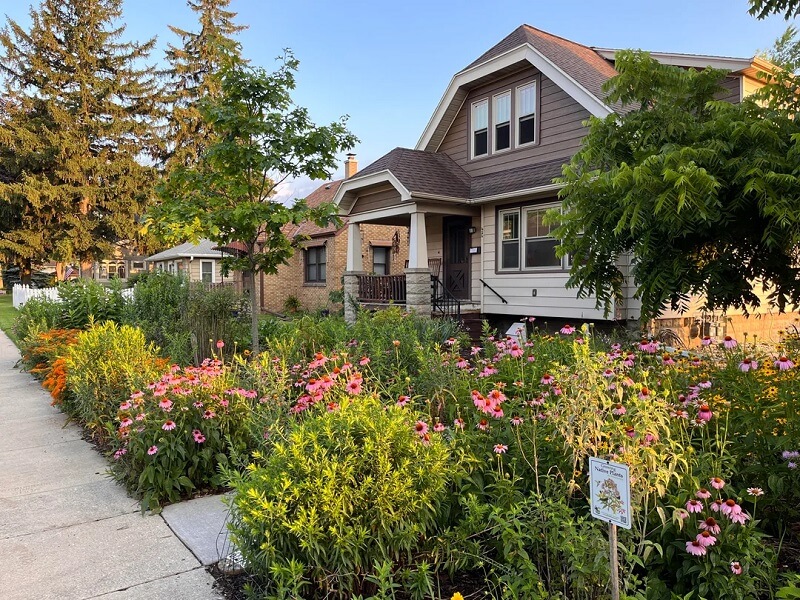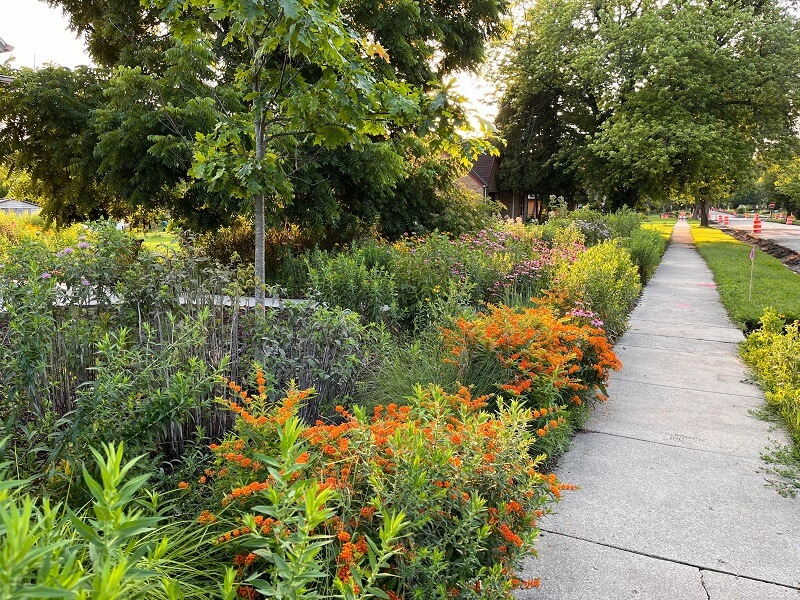Our lawns give us freedom with creativity. However they go about it, homeowners can put their vision into practice, transforming depressing turf into something incredible.
On Reddit, a user with a green thumb and attention to detail shared photos in the r/NativePlantGardening subreddit of an assortment of plants.


"Three years ago this was all turf grass," wrote the OP above the series of three photos, each showing the beautiful variety of native plants from a different angle.
"We planted the red oak right when we moved in and later that Fall we sheet mulched with cardboard and mulch. Then filled it in with small plugs and a couple larger nanny berry viburnum and elderberry shrubs. The mature walnut was already in the yard, which made things interesting in choosing species. But we're happy with the progress," said the OP.
Native plants naturally occur in a specific area without human intervention and have evolved to thrive in that region's climate and soil conditions. By choosing native plants for your lawn, you can create a beautiful, low-maintenance yard that attracts pollinators and wildlife, reduces the need for watering and fertilizers, and helps prevent soil erosion.
Landscapers recommend specific native plants such as Pennsylvania sedge and lowbush blueberry because of their ability to stabilize slopes to prevent soil erosion.
Establishing native lawns has proven beneficial for homeowners' wallets and the planet. For instance, a tapestry lawn can reduce water usage by a whopping 1,750,000 gallons over a decade. Plus, these lawns only need to be mowed a few times a year, saving you time and effort on lawn care.
As native lawns support local biodiversity by attracting pollinators such as butterflies and bees — which Greenpeace reports are responsible for 80% of pollination worldwide, including for 70 major crops that contribute 90% of our food supply — homeowners also take part in protecting the food supply for communities.
Whether it be through incorporating clover, buffalo grass, or xeriscaping, even a partial lawn replacement can allow homeowners to reap these benefits.
According to Plan It Wild, homeowners increasingly opt to "re-wilding" their homes to encourage natural ecosystems to recover, per ABC News.
"That is gorgeous," commented one Redditor.
"Wow! This is absolutely amazing," wrote another.
Join our free newsletter for easy tips to save more and waste less, and don't miss this cool list of easy ways to help yourself while helping the planet.









